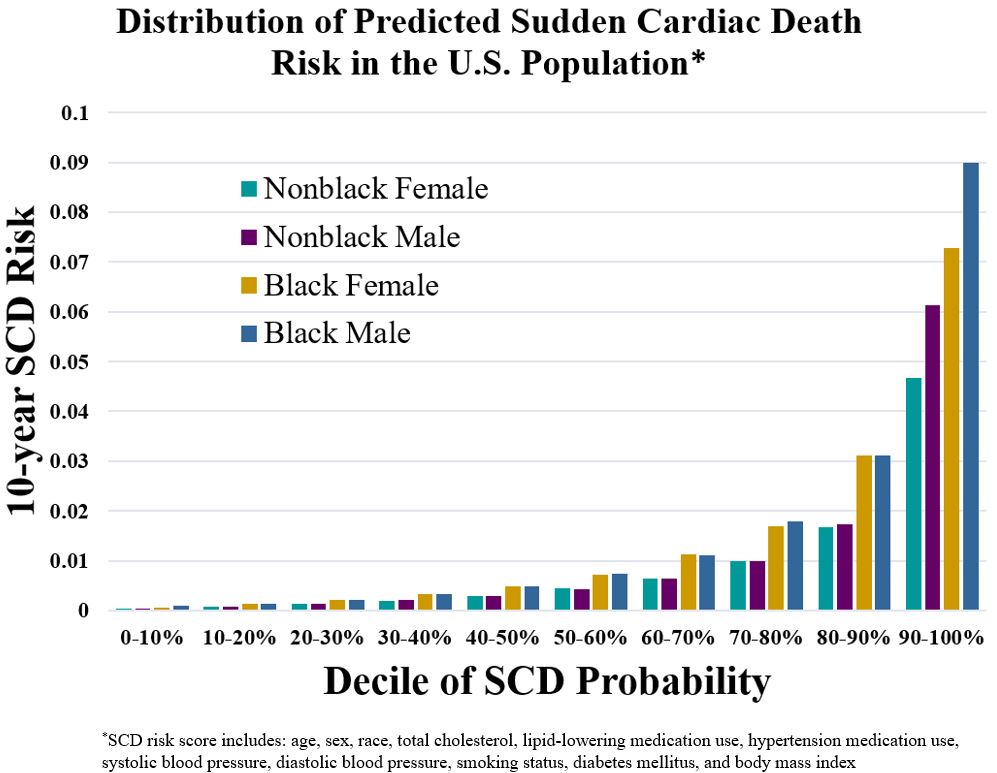Presenting Author:
Kristoff Olson, M.D.
Principal Investigator:
Donald Lloyd-Jones, M.D.
Department:
Preventive Medicine
Keywords:
sudden cardiac death, risk prediction score, population health, NHANES
Location:
Ryan Family Atrium, Robert H. Lurie Medical Research Center
C111 - Clinical
Sudden Cardiac Death Risk Distribution in the United States Population
Background: Sudden cardiac death (SCD) accounts for more than half of all deaths from cardiovascular disease (CVD) and is the first manifestation of heart disease in 50% of these individuals. We sought to determine the distribution of SCD risk in the general US population. Methods: We recently developed a population-based, 10-year risk score for SCD using data from the Atherosclerosis Risk in Communities cohort and the Framingham Heart Study. We recalibrated the risk score for use in multiracial populations. We then assigned 10-year predicted SCD risk to NHANES participants (from exam cycles in 2005-2012) and stratified participants as either low risk (0-80th percentile of risk) or high risk (81st-100th percentile of risk). Results: We included 10,811 CVD–free, non-institutionalized and nonpregnant individuals ages 30 to 70 years, representing approximately 120 million US adults. High risk participants were older, had higher blood pressure, total cholesterol and BMI, lower HDL, and were more likely to be male, black, smokers and diabetic. The average predicted 10-year risk of SCD was 3.6% among high risk participants, and 0.37% among low risk participants. Conclusion: Among U.S. adults free of CVD, the majority of SCD risk is confined to 10-20% of the population. This risk score may help identify a subset of individuals in the community who are at an appreciably increased risk of SCD, and in so doing provide an enriched pool of individuals who are candidates for additional screenings or targeted therapies.

